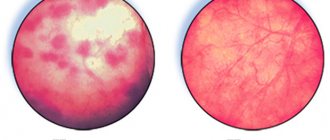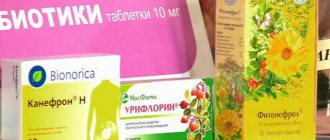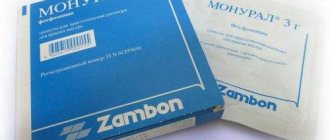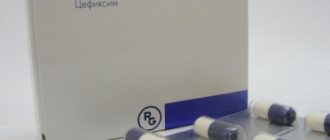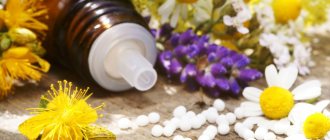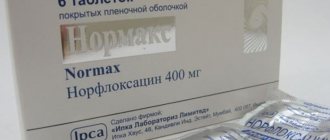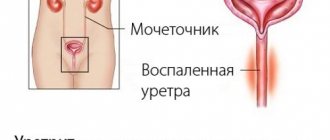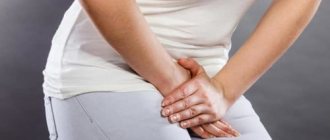Cystitis in boys
The inflammatory process of the bladder walls is called cystitis. People of different ages, men and women, are susceptible to pathology. The disease also affects young children. Cystitis in boys aged 3-9 years occurs 5-6 times less often than in girls. But these boundaries are erased in babies under 1 year of age due to the peculiarities of the anatomical structure. In infants, the genitourinary system goes through a stage of active development and the urethra of boys and girls is approximately the same length. Diagnosis difficulties lie in the fact that children under 3 years of age cannot express painful sensations verbally, and parents have to guess about the development of cystitis by a number of signs accompanying the disease.
Consequences
If parents know which doctors treat cystitis in children and contact them at the first signs of the disease, the inflammatory process will not cause any complications. Timely adequate treatment leads to complete recovery within 1-2 weeks.
Lack of therapy provokes inflammation to become chronic. Initially, it may seem that it has become easier. However, cystitis continues to progress and will worsen with the slightest decrease in immunity.
Careful monitoring of the child after cystitis is necessary. 2-3 weeks after antimicrobial therapy, it is recommended to take a second test and make sure that the correction helped.
Causes
In young children, inflammation begins in the area of the foreskin and lower urethra, which develops along an ascending path. Less common are cases where cystitis is provoked by serious conditions: pyelonephritis, congenital anomalies of the kidneys, underdevelopment of the genitourinary system. Bladder inflammation is caused by:
- failure to comply with personal hygiene standards (after defecation and urination, feces and urine residues on the skin create an ideal breeding ground for pathogenic microorganisms);
- hypothermia of the body (starting from the age of 5, children spend a lot of time outside, participating in active games, jumping in puddles, running with a ball);
- antibiotics – medications that are prescribed for infectious diseases and cause an imbalance of beneficial microflora in the intestines;
- pathologies of the structure of the genital organs;
- weakened immunity (cystitis in boys is caused by Escherichia coli and Pseudomonas aeruginosa, staphylococci, streptococci, Candida fungi, the development of which the body’s defenses cannot restrain);
- infection with helminths (the unhindered reproduction of parasites leads to the accumulation of their metabolic products in the child’s body and subsequent general intoxication);
- infectious diseases (viruses and pathogenic microorganisms enter the blood and travel with it to the organs);
- severe stress (children's cystitis at 3 years of age and older can be caused by an emotional shock, in which the child experiences nervous overstrain, manifested in lack of appetite, physical weakness, fear, depression);
- sexually transmitted diseases transmitted to the fetus in the womb (treatment of cystitis in boys is difficult and long if the woman was infected during pregnancy with gonococci, chlamydia, trichomonas, treponema pallidum).
The disease in children often manifests itself in an acute form, in which the symptoms are pronounced and cannot be ignored by adults. It is important to respond in a timely manner to the symptoms of cystitis in boys and make an appointment with a pediatrician, who, based on the results of examinations, refers sick children to a urologist.
Bottom line
The most common causes of cystitis in boys are poor personal hygiene, hypothermia and congenital developmental features. Parents need to monitor the cleanliness of the child’s genitals and anus, dress him according to the weather, and regularly undergo medical examinations if abnormalities in the structure of the pelvic organs are detected.
Alarming symptoms are a change in the shade and consistency of urine, a sharp reduction in its quantity, and complaints of pain when urinating. Of all the treatment options, it is better to choose the most gentle one, even if it does not give instant results. Strong medications have a number of side effects, and the child’s body has a hard time withstanding this ordeal.
Sometimes even changes in diet, proper organization of sleep and rest, and drinking plenty of fluids provide noticeable relief in the treatment of cystitis. The efforts of adults should be aimed at stimulating self-healing processes and providing the child’s body with valuable microelements and vitamins. In severe forms of the disease, medications are used strictly as prescribed by the attending physician.
Symptoms
In children at different ages, signs of cystitis appear through certain reactions of the body:
- A child under 3 years old feels pain when urinating, goes to the toilet more often, cries, and refuses active games. Body temperature rises to 37-38 C. The volume of urine in the pot is 3-4 times less than usual. It may have a darker color and contain impurities in the form of pus or uric acid deposits. Treatment of a child, as a rule, begins later than necessary, because adults associate the malaise with poor nutrition or infectious diseases and are sincerely perplexed why the signs of the disease do not disappear.
- Children aged 3-5 years experience burning, sharp pain with a full bladder and after urination. At this age, babies try to express their poor health by holding their hands on the lower abdomen. When trying to go to the toilet, a painful grimace appears on the child’s face. He pushes, but very little urine comes out. Urinary incontinence occurs not only at night, but also during the day. It is not caused by enuresis, as adults think. Stagnation of urine causes active proliferation of pathogenic bacteria, which can lead to serious complications.
- If children aged 1 year report their condition through crying and restless behavior, then children 5-9 years old can explain to their parents that the lower abdomen hurts, and the pain intensifies when emptying the bladder. Incontinence is observed less frequently than at a younger age, because the child, by force of will, tries to hold back urination and runs to the toilet. But during the night's rest, urine excretion still occurs involuntarily. Parents should carefully question the child about the nature of the sensations experienced and immediately go to the hospital.
The main signs indicating the development of cystitis in children are:
- painful constant or periodic cramps in the lower abdomen;
- increased temperature in acute form of the disease;
- decrease in the amount of fluid released;
- change in the color and consistency of urine;
- frequent urge to go to the toilet;
- general physical weakness, depressed state.
Symptoms and treatment of cystitis take a long time and can be accompanied by complications if the obvious signs of the disease were ignored by adults, and a visit to the doctor occurred during a severe, advanced stage. At this time, the child may be diagnosed with phimosis, hematuria, interstitial cystitis (damage to the muscular layer of the bladder, leading to its shrinkage and further dysfunction). A small patient has to be treated with strong drugs, the residual products of which have a negative effect on the child’s body.
Features of the course at different ages
Girls and girls with the following health complications are most susceptible to this disease:
- chronic diseases;
- congenital anomaly of the genitourinary tract;
- pancreatic diseases;
- diabetes.
The course of the disease in children can be different, it can have its own exacerbations and possible deterioration.
0 – 1 year
Infants suffer from cystitis in most cases due to congenital abnormal development of the body. This manifestation can be noticed at the initial stage of the baby’s life. Daily use of diapers can lead to the development of the disease. The favorable environment on it promotes the growth of bacteria, as a result of which the mucous membrane of the genitourinary system becomes irritated and infected.
From 1 year – 3 years
Cystitis in girls of this age occurs for several reasons. Harmful bacteria that enter from the intestines and vagina due to improper hygiene standards easily penetrate vulnerable organs that are physiologically located nearby and quickly multiply there, causing an uncomfortable and painful condition for the little girl. Parents should monitor daily hygiene to ensure that children do not freeze and do not sit on cold surfaces.
From 3 – 8 years
From this age period, the girl begins to accustom herself to independently perform hygienic procedures for the genital organs, to perform the correct manipulations in order to avoid the proliferation of pathogenic flora.
From 8 – 16 years
At this age, the girl experiences hormonal changes that turn her into a girl. After the first period begins, it is necessary to explain the rules for proper care of intimate areas during their manifestation.
A growing girl can follow fashion trends and wear outerwear that is inappropriate for weather conditions, which leads to hypothermia, start a diet that is not suitable for her age, get involved in bad habits, which harms the body and leads to weakened immunity and manifestations of vulvitis, vulvovaginitis, and cystitis.
It is important to closely monitor your child of any age, especially girls. If the body of children is absolutely healthy, then the manifestation of the disease can be provoked by medications that weaken the immune system, herbal infusions that irritate the bladder mucosa, and unsuitable detergents for intimate areas.
Therapy
Treatment includes diet therapy, drinking enough fluids, maintaining a sleep and rest schedule, taking vitamin complexes, and physiotherapy. For complicated forms of the disease, medications are used.
General recommendations
A child whose disease is diagnosed and treated in a timely manner has every chance of a successful recovery. Parents must strictly comply with the following requirements of the doctor:
- Drink plenty of fluids, including juices, fruit drinks, weakly brewed tea, diuretic decoctions (recommended from 9-10 years of age, not earlier), clean drinking water - at least 2 liters per day. The liquid washes the mucous membranes of the internal organs, taking some of the pathogens with it.
- Using dry heat (canvas bags filled with heated salt and sand), plastic bottles and hot water bottles (wrapped in a towel or piece of cloth to avoid burning delicate skin). They are applied to the lower abdomen for 10-15 minutes 2-3 times a day.
- Exclusion from the diet of heavy, high-calorie foods (saturated with animal fats, flour, salted, fried, spicy, smoked). The child should eat fruits and vegetables, cereals, dairy products, berries, lean meats or fish.
What are the features of symptoms and treatment of cystitis in boys?
Cystitis is a disease in which inflammation occurs in the bladder and disruption of its functions. Parents need to be careful and recognize bladder inflammation in children in time, otherwise the disease may take a form in which it is very difficult to overcome. Childhood cystitis is most often diagnosed in girls and very rare cases occur when cystitis occurs in boys.
Parents should not self-treat their child or delay going to the doctor, as the disease can become chronic. This is especially true for cases of cystitis in boys. In them, this disease often occurs in an acute form and with pronounced symptoms.
Cystitis
Cystitis is divided into different classifications and is characterized by different features:
- by type of form (there are acute and chronic);
- by nature of origin (primary and secondary);
- in the place where there is inflammation (cervical, diffuse or trigonitis).
Symptoms
Inflammation of the bladder can occur even in the youngest children (even a one-year-old child), but the signs vary depending on the gender and age of the child.
The manifestations of the disease are correlated at certain ages, and it is important to detect it in time. Also, as the child grows, the symptoms may become less obvious (a 5-year-old child will tolerate the pathology somewhat easier than a 3-year-old child).
Cystitis in children is a dangerous disease, as it can become chronic or lead to even more serious diseases, for example, pyelonephritis.
Signs of cystitis are not immediately apparent and can only be detected by urine analysis. A video with details about the tests can be viewed from Dr. Komarovsky. In them, the pediatrician explains all the nuances and explains how to interpret the meaning of urine tests.
But the occurrence of cystitis in boys is immediately expressed by acute symptoms. Ignoring the symptoms of the disease can lead to the development of a chronic disease.
A chronic disease cannot be completely cured, so children will be forced to undergo therapy courses throughout their lives.
The first sign is always an increase in body temperature, because the body begins to fight foreign bodies (bacteria) or infection.
Up to 1 year
In addition to general symptoms such as fever and tearfulness of the child, the color of his urine may change. Parents need to be careful and not attribute everything to children’s whims, since the child cannot yet say that something is wrong with him or what exactly hurts him.
If you notice these symptoms, you should immediately consult a doctor, because cystitis can become chronic.
From 1 year to 3 years
The temperature rises, there is a frequent urge to urinate, and the child may cry while urinating. At this age, cystitis is especially dangerous for a child’s body because pyelonephritis can also develop against its background.
If blood or blood streaks appear in the urine, it is necessary to examine not only the urethra, but also the kidneys.
From 3 years to 8 years
Pain in the lower abdomen, false urge to urinate or, conversely, incontinence, possible bladder spasms, which affect the deterioration of urine outflow.
All symptoms are pronounced, since children’s immunity is still difficult to cope with them.
From 8 years to 16 years
In older children and adolescents, the immune system is stronger and does not allow the symptoms of cystitis to manifest themselves as brightly as in younger ages. There is frequent urination. There is a danger of inflammation of the urethra and testicles in boys during exacerbation of the disease.
In addition to visual symptoms or the child's complaints of pain, a urine test is important. Dr. Komarovsky discussed this topic in detail.
Diagnostics
The diagnosis of childhood cystitis is made by a doctor based on medical history and research results. To confirm the diagnosis:
- General analysis of urine and blood. In the urine of cystitis, leukocytes, erythrocytes, traces of protein, transitional epithelial cells, microorganisms, mucus, and salts are found in increased quantities;
- urine culture to detect and determine the sensitivity to antibiotics of the causative agent of infectious cystitis;
- Ultrasound of the pelvic organs before and after urination. In an acute inflammatory process, ultrasound can detect thickening of the epithelial layer of the mucous membrane and suspension in the lumen of the organ.
To confirm the diagnosis, you need to take blood and urine tests.
Boys and adolescents should be treated by a specialist - a urologist, but first the child is examined by a pediatrician. Diagnosis begins with an external examination of a small patient, an assessment of the general state of health, and a study of pathologies in the anamnesis. To conduct effective therapy, the doctor must study the results of laboratory and, if necessary, biochemical tests of urine and blood.
What indicators does the doctor focus on:
- a low level of platelets and hemoglobin in the blood indicates poor resistance of the child’s body to viral and bacterial infections, a lack of vitamins and microelements;
- An increased concentration in the urine of leukocytes, uric acid and its salts suggests the development of an acute or chronic inflammatory process in one of the parts of the urinary system.
If cystitis is suspected in boys and adolescents, a urine sample is taken for culture in a nutrient medium. In this way, the pathogenic causative agent of the infection and its sensitivity to the main types of antibiotics are determined.
Sometimes additional instrumental procedures are required to confirm the diagnosis. For young children, the urologist usually chooses an ultrasound examination of the pelvic organs. This examination method is sometimes necessary to differentiate benign and malignant neoplasms of the kidneys, ureters or bladder.
During cystitis, boys need to drink fruit drinks made from cranberries and lingonberries
Treatment
There is a set of measures for the treatment of cystitis. These methods coincide with the treatment of cystitis in adult men. It consists of treatment with medications, special diets and hygiene measures.
Symptoms and treatment are closely interrelated, since the symptoms determine how to treat the boy’s disease, the exact course of treatment, and what therapeutic methods will be used.
Parents need to ensure that these measures are strictly followed in order to prevent the development of a chronic form of the disease. Chronic cystitis is much more difficult to treat and requires several courses of treatment for each exacerbation.
There is a list of general recommendations that alleviate symptoms and have a beneficial effect on the body, helping in the treatment of the boy. If a disease is detected, these recommendations must be followed by everyone, regardless of gender and age.
General recommendations
- compliance with bed rest for the entire period of treatment of the disease;
- monitor the conditions in the room; the genitals and bladder area should be kept warm;
- it is necessary to maintain genital hygiene;
- it is possible to use folk remedies in the form of baths of anti-inflammatory herbs (it is necessary to consult with your doctor if the patient wants to use traditional methods).
These recommendations help cure the disease and prevent its relapse. However, just following general recommendations will not ensure a complete recovery of the child; it is necessary to undergo a full course of treatment.
If you ignore or do not follow all the rules, a chronic form may develop (especially if the disease progresses quickly in boys), against the background of which diseases of other organs associated with the urinary and reproductive systems will appear.
Drug treatment
The main treatment is medication, since cystitis can be infectious. The doctor can prescribe three types of drugs:
- antibiotics - need to be taken to fight inflammation, but you cannot choose the first medicine you come across; consultation with a specialist is mandatory. Different antibiotic medications are suitable for different ages. It should be remembered that much depends on the type of pathogen;
- antispasmodics - eliminate the symptoms of the disease, namely: facilitate urination and pain;
- analgesics - prescribed for acute forms to relieve pain completely.
Physiotherapeutic procedures
During treatment, special procedures are used to eliminate this disease:
- magnetic therapy - allows you to relieve the symptoms of inflammation. In the chronic form of the disease, it relieves exacerbations, stimulates the child’s immunity and metabolic processes in the body;
- short-pulse electroanalgesia - has an analgesic property and reduces the growth and development of pathogenic bacteria. However, if the disease is infectious or acute, it can be dangerous and is not used;
- laser therapy - helps with inflammation and has analgesic properties. Improves blood circulation, and therefore affects the improvement of urine outflow. It also stimulates restoration processes, which is useful for tissue damage.
For chronic cystitis, it is recommended to undergo these procedures to reduce the risk and severity of exacerbations.
Prevention
By following simple rules you can avoid cystitis or prevent relapses:
- maintain personal hygiene. The baby is washed daily using gentle detergents. He must have separate bath accessories: a towel, a washcloth.
- avoid hypothermia. After being in the water, swimwear is changed, play in the snow is limited, etc.
- Teach your baby to go to the toilet on time. If the kid is playing too much and doesn’t want to go to the potty, then explain that this is harmful.
- suggest drinking more often.
- Involve boys in an active lifestyle, sports and hardening.
(Visited 67 times, 1 visits today)
Traditional methods
For cystitis, it is often recommended to use traditional methods in addition to general treatment. However, such treatment should not interfere with the main course of therapy.
When using the following methods, you should consult your doctor as they may harm your baby.
For cystitis, it is recommended to use herbal decoctions that have an anti-inflammatory effect. The most effective are:
- Linden;
- St. John's wort;
- plantain;
- sage;
- celery.
From the herbs listed above, you can make special baths that will relieve pain and have disinfectant properties.
It must be remembered that it can be dangerous to give some herbs to a child, because they not only heal, but also have toxic properties, which can ultimately aggravate the disease and intensify intoxication symptoms, therefore, treatment with traditional methods should be selected by the attending physician.
Self-prescribing herbal recipes can lead to complications that lead to the development of chronic diseases.
Cystitis in boys: symptoms and treatment
Cystitis is an inflammation of the bladder. Girls get it 5 times more often than boys. This is due to the anatomical features of the female body - the urethra in girls is much shorter and larger in diameter, which is a positive condition for the development of an infection in the bladder that gets there along the ascending path. However, recently this diagnosis is increasingly being given to boys. Not all parents know what the symptoms are and how this disease is treated.
Clinical picture
With cystitis, inflammation covers the mucous and submucosal layers of bladder cells. Boys of preschool and primary school age are more susceptible to developing the disease; adolescents and children under 1 year of age suffer from cystitis much less often.
The main factor stimulating the development of the inflammatory process in the bladder is general hypothermia of the body. In such conditions, the infection receives ideal conditions for development and reproduction.
The pathogen enters the organ cavity via the ascending (through the urethra) or descending (from the kidneys or ureters) pathway. Very often this happens due to non-compliance with personal hygiene rules.
Cystitis can be bacterial or fungal in nature. Children can become infected in public places: schools, kindergartens, swimming pools, baths, public toilets, and so on.
According to the clinical course, acute and chronic cystitis are distinguished.
Acute cystitis begins suddenly. It manifests itself as sharp pain in the lower abdomen, frequent tenesmus (false urge to urinate), pain and burning during urination, as well as an increase in general body temperature. Symptoms progress quite quickly. With timely treatment, the prognosis is quite favorable.
Chronic cystitis most often occurs as a secondary disease arising from another infectious process in the urinary system.
The symptoms here are more diffuse, and treatment usually takes longer.
Under normal conditions, the inner lining of the bladder is distinguished by a number of protective reactions that do not allow the pathogen to actively develop.
Symptoms and treatment of cystitis will vary in boys of different ages:
- In children under the age of one year , with cystitis, tearfulness is observed, urine acquires a rich dark yellow tint, urination becomes either too frequent or rare, and body temperature rarely exceeds normal values.
- In boys over 3 years of age , acute pain occurs in the lower abdomen, the urine becomes cloudy, the urge to urinate is obsessive, and the general body temperature may increase (in combination with other symptoms of fever).
Why does cystitis occur?
The causative agents of cystitis can be bacteria, fungi, viruses and other harmful microorganisms. Here are some reasons for the development of cystitis in a child.
Most often, exacerbation of cystitis occurs against the background of hypothermia. You cannot swim in cold water, sit on concrete, dress lightly in the cool season, or play on a cold floor. All this leads to the onset of the inflammatory process.
Fungi and bacteria can become more active against the background of decreased immunity due to frequent illnesses of the child.
An unbalanced diet, untimely introduction of complementary foods, and the lack of natural vegetables and fruits in the diet can lead to the baby developing vitamin deficiency, which also causes an exacerbation of cystitis.
Failure to comply with personal hygiene rules is another reason for the development of cystitis. Panties need to be changed every day, otherwise dirty underwear can become a provoking factor in the development of the inflammatory process. The same applies to diapers - they should be changed every 3-4 hours, otherwise they will become a breeding ground for infections.
Various chronic diseases of the genitourinary system often lead to cystitis. Often, kidney disease and cystitis occur simultaneously.
Cystitis pathogens can enter the urethra through the anus and genital tract. Incorrect hygiene often leads to cystitis in girls. If a child wipes his butt after defecation from the anus towards the vagina, a piece of feces may enter the urethra. Inflammation begins in the urethra, which quickly rises to the bladder.
Cystitis can occur due to untimely emptying of the bladder. Children often play, an interesting game does not allow them to go to the toilet. If the baby is constantly suffering, this can also trigger the development of cystitis.
Cystitis can be acute or chronic. Acute cystitis develops very quickly, proceeds rapidly, it has obvious symptoms, the acute form of the disease can be completely cured in 7-10 days. Chronic cystitis is frequent inflammation of the bladder, which occurs less acutely, but constantly, with the slightest hypothermia. Chronic cystitis can be cured, but it takes quite a long time. Even if the treatment has given results and the symptoms have subsided, you cannot stop taking the medications, otherwise the disease will again become chronic.
how to treat urticaria in children
Therapy
When the first signs of the disease appear, you should immediately seek qualified help from a doctor and not self-medicate. Delay can significantly increase recovery time and provoke the development of complications. By not seeking medical help on time, parents risk mistaking another disease with similar symptoms for cystitis.
If cystitis is suspected, the doctor will prescribe a series of laboratory tests. As a rule, these are general urine and blood tests. Based on complaints and test results, a diagnosis is made.
Therapy for acute cystitis consists of destroying pathogenic microflora and alleviating the child’s condition (pain can be relieved, diuresis is normalized, and general condition is improved).
Peace must be ensured. During the first 4-5 days, the child should remain in bed, especially if there is an increase in general body temperature (with all the accompanying signs of fever).
The second (and no less important) treatment option for cystitis in boys is drug therapy. Usually, treatment of this disease cannot be done without the use of antibacterial agents, but it is important to remember that only a doctor can prescribe antibiotics for cystitis, based on the clinical picture. Uncontrolled use of medications will not only not help improve the child’s condition, but will also cause significant damage to his health.
For cystitis, not only antibacterial agents are prescribed, but also antispasmodics and non-steroidal anti-inflammatory drugs.
During the entire treatment period, it is important to organize a special diet for the child. It is necessary to exclude excessively spicy foods, marinades, and smoked foods from his daily diet. You should limit the amount of salt you consume, as it retains fluid in the tissues. The diet should be balanced, contain fiber, vitamins and minerals.
At this time, you need to drink more liquid: not very strong tea, berry juice (cranberry drink is useful for cystitis), compote, still mineral water.
It is worth mentioning that during illness you should carefully monitor that the baby does not freeze (especially the legs and back).
It is necessary to pay special attention to the care of the genitals, since neglect of simple hygiene rules can lead to re-infection.
The doctor may recommend (in addition to all the remedies listed) the use of warm sitz baths with the addition of herbal infusions. If you strictly adhere to the treatment plan drawn up by the doctor, then on average the recovery period lasts no more than a week.
Diet
Nutritional therapy is an important component of the treatment of urinary pathology. Children's diet during the acute period must be carefully planned.
For inflammation of the bladder, the basis of nutrition is fermented milk products, vegetables and cereals.
Proteins should be limited. Too much protein intake into a child’s body contributes to the progression of the disease and involvement in kidney inflammation.
The diet should be fractional. The baby should eat 5-6 times a day in small portions. Every meal must be supplemented with vegetables or fruits.
Various fermented milk products have a good effect on the baby’s immunity. Try to choose fermented milk with the shortest possible shelf life, as it contains more beneficial lacto- and bifidobacteria.
During the acute period of the disease, dishes should be prepared in a gentle way. Food should be boiled, baked, stewed or cooked using steam.
A regular multicooker will be an excellent helper for mothers, in which you can cook a huge number of different healthy dishes.
For all pathologies of the urinary system, the daily amount of table salt in the children's diet is limited. Doctors recommend that children consume only 2-3 grams of sodium chloride throughout the day.
Excessive salt content in cooked dishes contributes to the development of pronounced swelling in the baby’s body, which most often appears on the face.
Compliance with the drinking regime in the treatment of bladder pathologies is a necessary condition for achieving a positive result.
Various compotes or fruit drinks made from fruits and berries are suitable as healthy drinks. Decoctions of dried fruits will also be an excellent alternative to regular boiled water. When preparing fruit drinks and compotes, you should not sweeten them too much.
You can additionally enrich your diet with vitamins and minerals that have a general strengthening effect using multivitamin complexes. These drugs should be used for 1-2 months. Longer use is discussed with your doctor.
Taking multivitamin complexes during the period of remission of chronic cystitis has a pronounced preventive effect.
You can also learn how to treat childhood cystitis by watching a video with the participation of the famous pediatrician Dr. Komarovsky.
Use of antibiotics
The most common pathogenic microflora that provokes the development of cystitis in boys is represented by E. coli, staphylococcal and streptococcal infections, fungi, and adenovirus. Therefore, treatment of cystitis cannot be effective without antibiotic therapy.
In such cases, your doctor may prescribe some of the following antibacterial drugs:
- Penicillin group drugs: Augmentin, Amoxiclav and others. The course of treatment is at least a week.
- Macrolides – “Sumamed”, “Azithramycin”. The course of treatment is 3 days.
- Group of cephalosporins – “Taracef”, “Ceclor”, “Zinnat”.
- Phosphonic acid derivatives – “Monural” and other drugs.
When using antibiotics, it is important to strictly follow the recommendations of your doctor and in no case self-medicate. To correctly select the most appropriate antibacterial agent, urine culture is usually prescribed.
However, it often happens that the disease is quite acute and it is not possible to wait for culture results. In such cases, it is advisable to prescribe broad-spectrum antibiotics. When the culture results are ready, treatment can be adjusted based on the test results.
During treatment, you cannot change the drug to another without the doctor’s permission or stop antibiotic therapy altogether. Even if the symptoms of cystitis have disappeared, pathogenic microflora can still remain in the bladder and fully manifest itself if favorable conditions are created for this.
After completing the course of antibiotic therapy, urine should be tested again for culture.
Diagnosis
First of all, the pediatric urologist will prescribe a high-quality diagnosis. This is very important, as it will help rule out other diseases accompanied by similar symptoms. An objective examination is also necessary to identify the cause of the disease, determine the lesions and the neglect of the disease.
First of all, the little patient will need to undergo a general urine test. What indicators of this study are worth paying attention to?
The very first thing is an increase in the number of leukocytes, as well as increased levels of uric acid and its salts. All this indicates the occurrence of an inflammatory process in the genitourinary system.
Another equally important study will be a general blood test. If a child has a low hemoglobin level and a low platelet count, this indicates a weak immune system, lack of nutrients, susceptibility to external infections, etc.
Next, the doctor may advise you to donate urine to a tank. culture to determine the causative agent of the disease and its sensitivity to the most common antibiotics.
If a boy is suspected of having cystitis, it may be necessary to conduct additional, more specific examinations - ultrasound examination of the kidneys, Zimnitsky test, cystoscopy.
What if this disease is diagnosed? Before you begin treatment for cystitis, you should determine its type.
Traditional medicine recipes
It should be immediately noted that it is impossible to cure cystitis solely with folk remedies. When the first symptoms of the disease appear in your child, there is no need to hesitate to go to the clinic. Some prescriptions can be used as additional methods of treatment - naturally, with the consent of the attending physician. Here are some of them:
- A teaspoon of crushed St. John's wort must be poured into 250 ml of boiling water and placed in a water bath for 30 minutes. After this, the resulting broth must be cooled and strained. Give your child a quarter glass 3 times a day before meals.
- Pour one teaspoon of cornflowers into 250 ml of boiling water. Infuse the mixture for 30 minutes (you can use a thermos). Single dose – 1/3 of a third of a glass. You need to take the mixture 3 times a day.
- Take chamomile, calendula and string in equal parts, mix. Pour 3 tablespoons of the resulting mixture into 1 liter of boiling water and keep in a water bath for 30 minutes. The broth needs to be cooled. The product can be used in the form of sitz baths, the course of treatment is at least a week.
